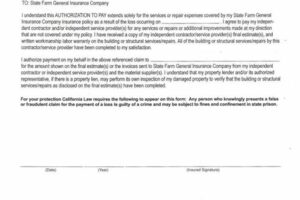Table of Contents
Learn how to farm your own fresh fruits and vegetables in the United States with our comprehensive guide. Get started on your sustainable farming journey today!
Farming fruits and vegetables is a rewarding and satisfying experience that can provide you with delicious and nutritious produce all year round. Whether you’re a beginner or an experienced farmer, there are some key steps to follow in order to maximize your success. From selecting the right crops to preparing the soil and managing pests, this guide will help you get started on your journey to becoming a successful fruit and vegetable farmer in the United States.
Firstly, it is important to choose the right crops for your region and climate. Different fruits and vegetables thrive in different conditions, so it’s essential to do your research and select crops that are well-suited to your local area. Once you’ve chosen your crops, you need to prepare the soil by adding organic matter, nutrients, and water. This will provide your plants with the best possible growing conditions and ensure they have access to the resources they need to flourish.
But farming is not just about planting and watering. You also need to be aware of potential pests and diseases that can damage your crops and take measures to prevent them. This may involve using natural pest control methods like companion planting or introducing beneficial insects to your garden. Additionally, you’ll need to monitor your crops regularly to ensure they’re growing as expected and make adjustments to your fertilization and watering schedule as needed.
By following these steps and taking a proactive approach to crop management, you can enjoy a bountiful harvest of fresh, healthy fruits and vegetables that are free from harmful chemicals and pesticides. So why not start planning your own fruit and vegetable farm today and experience the joy of growing your own food?
Farming fruits and vegetables in the United States is a great way to provide fresh, healthy food for your family and community. It can also be a rewarding and satisfying experience to grow your own food. If you’re interested in starting a fruit and vegetable farm, there are several things you should consider before you get started. This guide will provide you with some useful tips and advice on how to farm fruits and vegetables in the United States.
Preparing the Land
The first step in starting a fruit and vegetable farm is to prepare the land. You need to choose a location that has good soil, access to water, and plenty of sunlight. Once you have found a suitable location, you need to clear the land and remove any debris or obstacles. You may also need to add organic matter, such as compost or manure, to the soil to improve its fertility. It’s important to prepare the land properly before you start planting, as this will help ensure that your crops grow well.
Choosing Your Crops
Once you have prepared the land, you need to decide which crops to grow. The best crops to grow will depend on your location, climate, and soil type. Some popular crops to consider include tomatoes, peppers, cucumbers, strawberries, and blueberries. You may also want to consider growing herbs or leafy greens, such as lettuce or spinach. It’s important to choose crops that are well-suited to your local environment, as this will help ensure that they grow well and produce a good harvest.
Planting Your Crops
Once you have chosen your crops, it’s time to plant them. You need to follow the planting instructions for each crop, which will usually involve digging a hole in the soil and placing the seed or seedling into it. You may need to add fertilizer or other nutrients to the soil to help your crops grow. It’s important to plant your crops at the right time of year, as this will help ensure that they grow well and produce a good harvest.
Watering Your Crops
One of the most important things you can do to help your crops grow is to water them regularly. Most crops require a consistent supply of water to grow well. You may need to install an irrigation system to ensure that your crops receive enough water. It’s important to monitor your crops regularly and adjust your watering schedule as needed.
Pest Control
One of the biggest challenges you may face when farming fruits and vegetables is pests. Pests can damage your crops and reduce your harvest. There are several methods you can use to control pests, including using natural predators, such as ladybugs or praying mantises, or using organic pesticides. It’s important to monitor your crops regularly and take action if you notice any signs of pest damage.
Harvesting Your Crops
Once your crops have reached maturity, it’s time to harvest them. You need to follow the harvesting instructions for each crop, which will usually involve picking the fruit or vegetable at the right time and in the right way. It’s important to harvest your crops regularly to ensure that they don’t become overripe or spoil.
Preserving Your Crops
Once you have harvested your crops, you may want to preserve them for later use. There are several methods you can use to preserve your crops, including canning, freezing, or drying. It’s important to follow the preservation instructions for each crop to ensure that it stays fresh and retains its flavor.
Selling Your Crops
If you have a surplus of crops, you may want to consider selling them. There are several ways you can sell your crops, including at farmers’ markets, to local restaurants or grocery stores, or online. It’s important to research the local market and find out what types of produce are in demand before you start selling your crops.
Maintaining Your Equipment
To farm fruits and vegetables in the United States, you will need to invest in some equipment, such as tractors, plows, and tillers. It’s important to maintain your equipment properly to ensure that it lasts for a long time and works efficiently. This may involve regular maintenance, such as oil changes or blade sharpening, or making repairs when necessary.
Conclusion
Farming fruits and vegetables in the United States can be a rewarding and satisfying experience. By following these tips and advice, you can start your own fruit and vegetable farm and provide fresh, healthy food for your family and community. Remember to prepare the land properly, choose the right crops, water your plants regularly, control pests, harvest your crops at the right time, preserve your crops if necessary, sell your surplus produce, maintain your equipment, and enjoy the fruits (and vegetables) of your labor!
Starting a fruit and vegetable farm in the United States can be a rewarding and profitable endeavor. However, it requires careful planning, hard work, and a commitment to sustainable agriculture practices. Here are ten steps to get started:1. Start with a Plan: Before you even begin farming, it’s essential to have a plan in place. Consider what types of fruits and vegetables you want to grow, how much space you have available, and what tools you’ll need to get started.2. Find the Ideal Location: The location of your farm is critical to your success. Choose an area with fertile soil, access to water, and plenty of sunlight. You’ll also want to ensure that your farm is easily accessible to trucks and other equipment.3. Prepare the Soil: Once you’ve found the ideal location for your farm, it’s time to prepare the soil. This includes tilling the ground, adding organic matter, and testing the soil’s pH levels. You may also want to consider using cover crops to help improve the soil’s health.4. Choose Your Crops Carefully: The crops you choose to grow will depend on a variety of factors, including your local climate, soil type, and available resources. Be sure to choose crops that are well-suited to your area and that you have the means to care for properly.5. Practice Sustainable Agriculture: Sustainable agriculture is essential for the long-term health of your farm. This involves using a variety of techniques to minimize the impact of farming on the environment, including crop rotation, composting, and using natural pest control methods.6. Monitor Crop Health: Keeping a close eye on the health of your crops is crucial to their success. Be sure to check for signs of disease, pests, and nutrient deficiencies regularly.7. Irrigate Wisely: Water is essential to growing healthy crops, but it’s also important to use it wisely. Consider installing an efficient irrigation system or using drip irrigation to minimize water waste.8. Harvest at the Right Time: Knowing when to harvest your crops is key to ensuring they’re at their peak flavor and nutritional value. Be sure to harvest them at the right time to maximize their potential.9. Market Your Produce: Once your crops are ready to harvest, it’s time to market them to potential buyers. This could include selling directly to local consumers, partnering with restaurants or grocery stores, or using online marketplaces.10. Stay Educated: Farming is an ever-evolving industry, and it’s essential to stay up-to-date on the latest trends and techniques. Attend workshops and conferences, read industry publications, and network with other farmers to keep your skills and knowledge sharp.Starting a fruit and vegetable farm in the United States can be a daunting task, but following these ten steps can help set you up for success. Starting with a solid plan that takes into account the crops you want to grow, the location of your farm, and the resources you’ll need is crucial. Finding the ideal location is also critical, as it will affect the quality of your crops and the ease with which you can get them to market. Preparing the soil, choosing your crops carefully, practicing sustainable agriculture, and monitoring crop health are all essential steps to ensuring the long-term success of your farm. Irrigating wisely and harvesting at the right time are also crucial to maximizing the potential of your crops. Finally, marketing your produce and staying educated about the latest trends and techniques in farming will help you stay competitive and profitable over the long term.
Have you ever wanted to learn how to farm your own fruits and vegetables in the United States? With a bit of patience and dedication, you can have a thriving garden that produces delicious and nutritious produce.
Here are some tips and tricks to get you started on your farming journey:
Choose the right location:
- Pick a spot that gets plenty of sunlight, at least 6 hours a day
- Ensure the soil is well-draining and fertile
- Avoid areas with strong wind or heavy foot traffic
Plan what to plant:
- Research what fruits and vegetables grow best in your area
- Select crops that are easy to grow for beginners such as lettuces, tomatoes, strawberries, and herbs
- Consider planting companion plants to help ward off pests and improve growth
Prepare the soil:
- Loosen the soil with a shovel or tiller
- Remove any rocks or debris
- Amend the soil with organic matter like compost, manure, or peat moss to improve nutrient content
Plant the seeds:
- Follow the seed packet instructions for planting depth and spacing
- Water thoroughly after planting
- Consider using mulch to retain moisture and prevent weeds
Maintain the garden:
- Water regularly, especially during dry spells
- Check for pests and diseases and address them promptly
- Harvest fruits and vegetables when they are ripe
Enjoy the fruits (and vegetables) of your labor:
- Use your fresh produce in meals and snacks
- Share with family and friends
- Celebrate your success and plan for next season’s harvest
Farming fruits and vegetables can be a rewarding experience that provides fresh, healthy food for you and your loved ones. With some patience, hard work, and knowledge, you can start your own garden today!
As we wrap up this blog post, we hope that you have gained valuable insights on how to farm fruits and vegetables in the United States. It has been a pleasure sharing our knowledge and experience with you and we hope that it has been helpful to you. We would like to leave you with some final thoughts and tips to help you on your journey towards successful farming.
Firstly, it is important to note that farming is not an easy task. It requires hard work, dedication, and patience. However, the rewards are worth it. Farming your own fruits and vegetables can be a fulfilling and rewarding experience that not only benefits you but also your community. By producing your own food, you are reducing your carbon footprint and contributing to a more sustainable future.
Secondly, we recommend that you start small. Don’t try to farm too much at once. Start with a small plot of land and gradually increase as you gain more experience and confidence. It’s also important to choose crops that are suitable for your area and climate. Do some research and talk to local farmers to determine what crops grow best in your region.
Lastly, don’t be afraid to ask for help. Farming is a community effort and there are many resources available to help you succeed. Reach out to local farmers, agricultural organizations, and government agencies for guidance and support. Attend workshops and training sessions to learn new techniques and best practices.
In conclusion, we hope that this blog post has inspired you to take the leap into farming your own fruits and vegetables. With hard work, dedication, and a willingness to learn, you can create a successful and sustainable farm that will benefit you and your community for years to come.
.
People Also Ask about How to Farm Fruits and Vegetables in the United States
If you’re interested in farming fruits and vegetables in the United States, you likely have many questions. Here are some of the most common questions people ask, along with answers:
1. What are the best fruits and vegetables to grow in the United States?
- Some of the best fruits to grow in the United States include strawberries, blueberries, apples, peaches, and grapes.
- Some of the best vegetables to grow in the United States include tomatoes, lettuce, bell peppers, squash, and cucumbers.
2. What is the best time of year to plant fruits and vegetables?
- The best time to plant fruits and vegetables depends on where you live within the United States and what you’re planting. Generally, it’s best to plant in the spring after the last frost or in the fall before the first frost.
- You can research the ideal planting times for your specific area and crops to ensure the best results.
3. What are some common pests and diseases that affect fruits and vegetables?
- Common pests that can affect fruits and vegetables include aphids, caterpillars, and beetles.
- Common diseases that can affect fruits and vegetables include powdery mildew, black spot, and blight.
4. How do I prevent pests and diseases from damaging my crops?
- There are a few things you can do to prevent pests and diseases:
- Use natural methods like companion planting and crop rotation to deter pests and diseases.
- Keep your garden clean and free of debris.
- Monitor your plants regularly for signs of pests and diseases, and take action promptly if you notice any problems.
5. How often do I need to water my fruits and vegetables?
- The amount of water your fruits and vegetables need depends on the type of plant and the climate you live in.
- Generally, it’s best to water deeply and infrequently rather than frequently and shallowly. This allows the water to reach the roots where it’s needed most.
- Be sure to research the specific watering needs of your crops for the best results.
Farming fruits and vegetables can be a rewarding experience that provides fresh, healthy food for your family and community. By doing your research and taking proper care of your crops, you can enjoy a bountiful harvest year after year.






